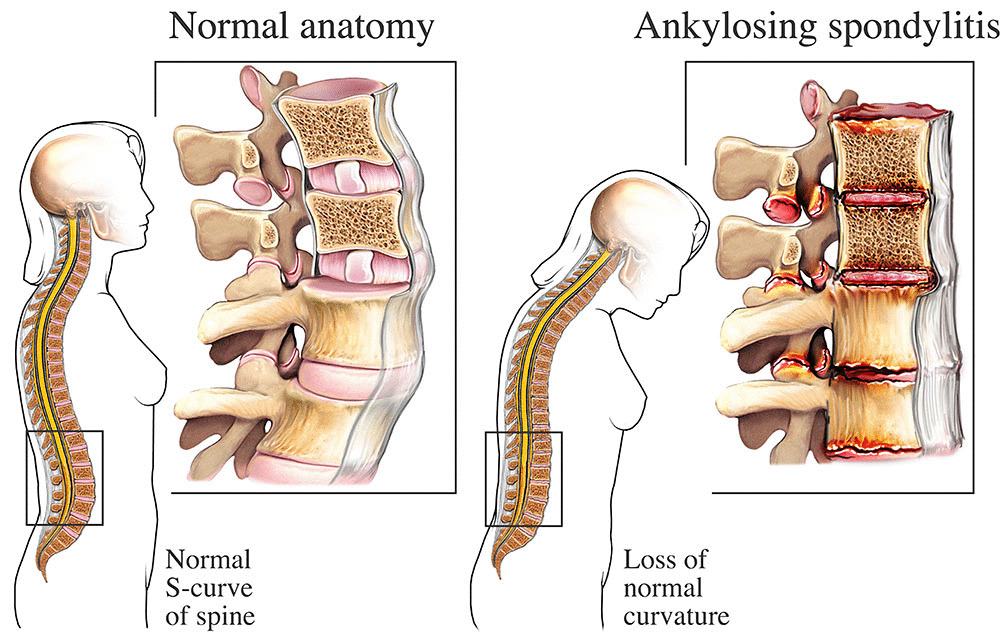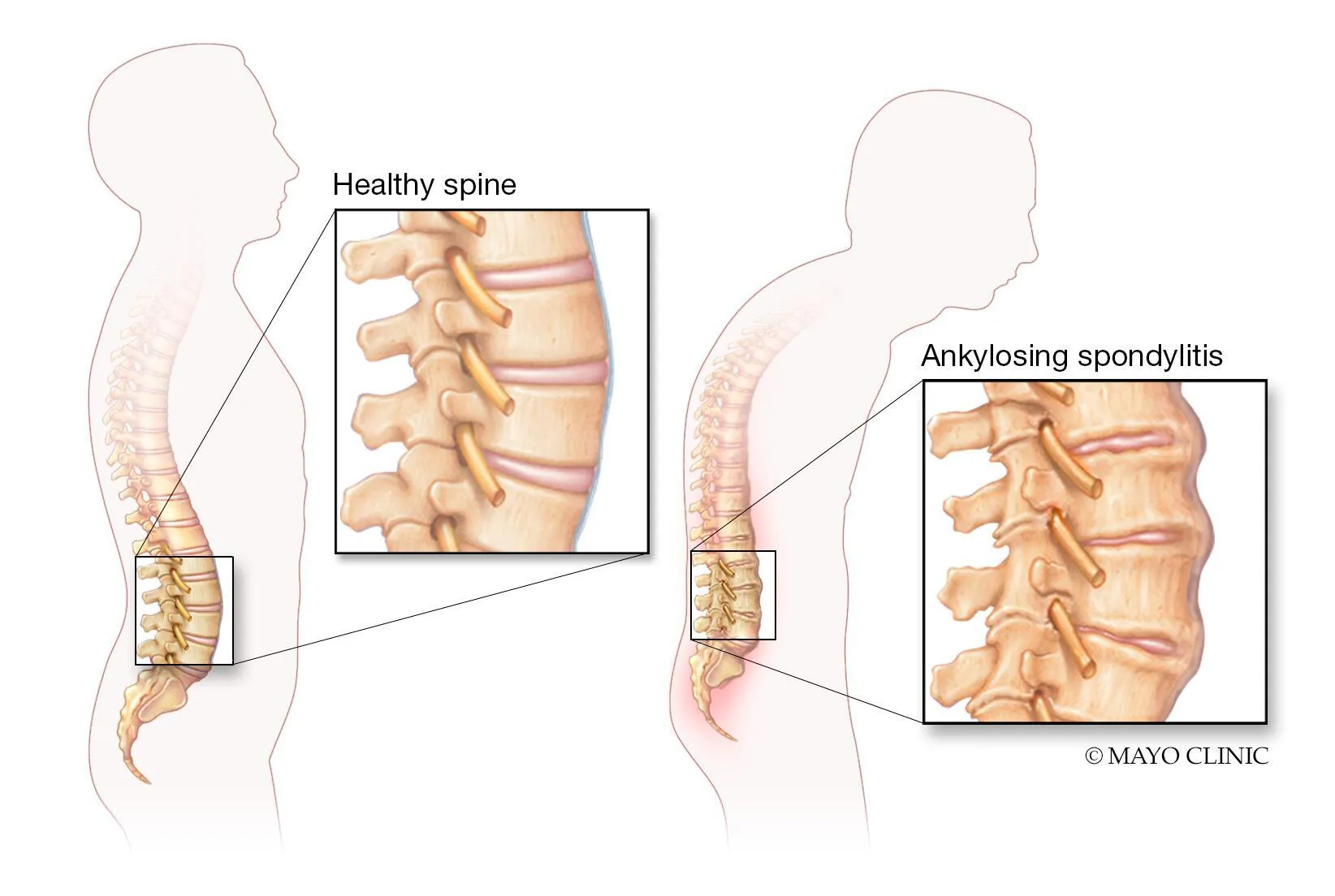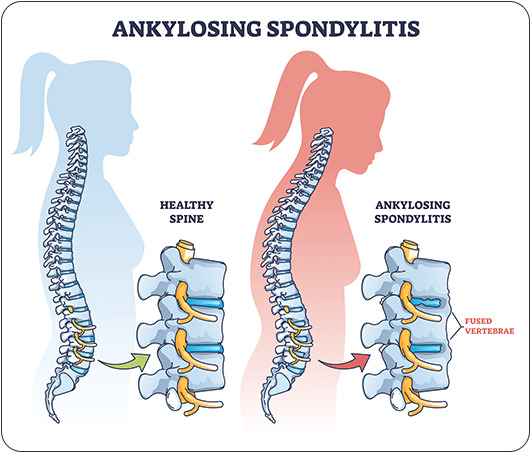Ankylosing Spondylitis
Ankylosing spondylitis is a type of arthritis that causes lower back pain. Symptoms, including hip pain and a stiff back that may come and go. Over time, vertebrae in the spinal column may fuse and become rigid (ankylosis)
An inflammatory arthritis affecting the spine and large joints. The condition is more common among men and usually begins in early adulthood. Symptoms typically appear in early adulthood and include reduced flexibility in the spine. This reduced flexibility eventually results in a hunched-forward posture. Pain in the back and joints is also common
Ankylosing spondylitis is two to three times more common in males than in females.
In women, joints away from the spine are more frequently affected than in men. Ankylosing spondylitis affects all age groups, including children. The most common age of onset of symptoms is in the second and third decades of life.
Causes:
The exact cause of Ankylosing spondylitis is not understood. It has been considered to be an autoimmune disease. Genetic factors are likely to be involved. The majority of people with Ankylosing spondylitis have a gene called HLA-B27. Recently, two more genes have been identified that are associated with ankylosing spondylitis. These genes are called ARTS1 and IL23R. These genes seem to play a role in influencing immune function.
Diagnosis:
Presence of HLA-B27 antigen, increased levels of CRP (C- Reactive Proteins) and ESR (Erythrocyte Sedimentation Rate) along with suggestive clinical history help in diagnosis of Ankylosing spondylitis.
Symptoms:
These include: painful stiffness of the lower back and hips which is often worse in the morning or after periods of inactivity. Over a period of time, the pain and stiffness may progress up the spine and to other joints such as hips, shoulders, knees and feet. Reduced mobility may be noted by the patient and gradually he may notice difficulty in bending the spine. In advanced stages of the condition patient may notice chronic stooping, stiff and inflexible spine, restricted expansion of the chest. Features such as loss of appetite, fatigue, weight-loss, inflammation of the eyes (iritis) and of the bowels may also be seen.
Duration of treatment:
AS being a chronic and difficult disease, the exact timeline cannot be predicted. Yes, it can be said that most patients see better pain control in about 4 weeks time. The total length of treatment varies form case to case, depending of the following factors:
•Duration of AS (Ankylosing spondylitis)
•Extent of tissue damage and fusion
•Patient`s age and general vitality
•Previous medication
Homeopathic treatment helps two ways:
a. Control underlying disease process
b. Significant Relief in pain and stiffness
Ankylosing Spondylitis (AS) being a constitutional disorder calls for a constitutional approach to its treatment. Homeopathic approach incorporates detailed study of the cases of AS inclusive of the genetic trend of the patients. The remedy prescribed after such detailed evaluation offers effective pain control as well as helps in controlling the progress of this condition.
Early cases of AS can be treated with good success with homoeopathy. Cases that have advanced to a moderate extent can also be helped, especially in preventing the further progress of the disease and limiting the pain. However, severe cases can only be relieved symptomatically with homoeopathic treatment.
Homeopathy is strongly suggested for Ankylosing Spondylitis, especially in the early and mid stages as:-
- It addresses altered immune system, treating the roots of this autoimmune disease.
- It helps in pain control without side effects.
- It aims at disease control
- It is absolutely safe even if used for a long time




